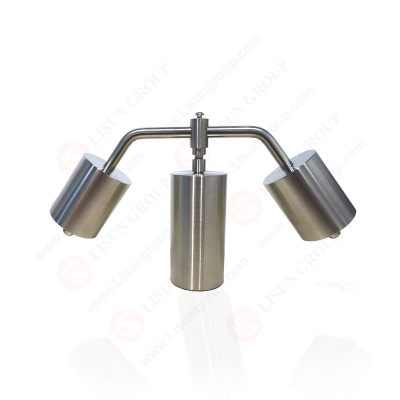
Overview
Ball Pressure Test (Resistance to Heat) is a critical experiment for evaluating the heat resistance performance of insulation materials, primarily used to support and protect energized components. The testing temperature varies depending on the material’s application, typically requiring materials supporting energized components to be tested at 125°C. Given that electrical accessories tend to heat up during operation, failure to withstand high temperatures can pose significant safety hazards. Therefore, conducting the Ball Pressure Test aims to reduce potential safety risks associated with electrical plugs.
Test Principle
The Ball Pressure Test assesses the heat resistance of materials by applying a fixed pressure to the sample in a high-temperature environment and observing the indentation depth to determine its performance. Various plastic materials that directly contact hazardous voltages must undergo this test. During the test, the sample is placed in an oven heated to a temperature set 40°C higher than the temperature measured during the temperature rise test, but not lower than 125°C. After the test, the diameter of the indentation area on the sample must not exceed 2mm.
Equipment Preparation
Ball Pressure Testing Device consists of two main parts:
• Pressure Weight: A weight exerting 20N of pressure.
• Base: 50mm in diameter, 100mm in height, with a 1mm diameter thermocouple hole. The base is made of integral 304 stainless steel.
• Temperature-Controlled Oven:Capable of accurately controlling and maintaining the set temperature to ensure the sample undergoes testing at the specified temperature.
ZBP-T Ball Pressure Test Device
Operational Steps
Sample Preparation:
• Prepare the plastic material sample according to the test requirements, ensuring the sample surface is smooth and clean.
Device Calibration:
• Install the pressure weight and base of the Ball Pressure Test device, ensuring the device operates correctly.
Temperature Setting:
• Set the oven temperature to 40°C above the temperature measured during the temperature rise test, but not below 125°C.
Sample Heating:
• Place the sample on the base of the Ball Pressure Test device.
• Insert the device into the preheated oven and heat for one hour.
Test Execution:
• Remove the sample and immediately apply a 20N pressure to the sample surface.
• Maintain pressure and keep the sample tested at the set temperature.
Result Recording:
• Measure the diameter of the indentation area on the sample.
• Record the diameter of the indentation area, ensuring it does not exceed 2mm.
Precautions
• Safety Operation: Personnel should wear protective gloves and goggles during testing to avoid injuries from high temperatures and heavy objects.
• Equipment Maintenance: Regularly inspect and maintain the Ball Pressure Test device and temperature-controlled oven to ensure accuracy and reliability.
• Temperature Control: Ensure oven temperature is stable without fluctuations to prevent affecting test results.
• Sample Handling: Handle high-temperature samples carefully after testing to prevent burns.
• Data Analysis: Accurately record and analyze test data to ensure integrity and accuracy.
By following these steps, the Ball Pressure Test effectively evaluates the heat resistance of insulation materials in high-temperature environments, providing reliable guidelines for material selection and application. It is hoped that these guidelines assist users in smoothly conducting Ball Pressure Tests and ensuring the accuracy and reliability of test results.
https://www.lisungroup.com/news/technology-news/ball-pressure-testing-guide-standard-operating-procedure-for-ball-pressure-testing-devices.html
.jpg)
Comments
Post a Comment